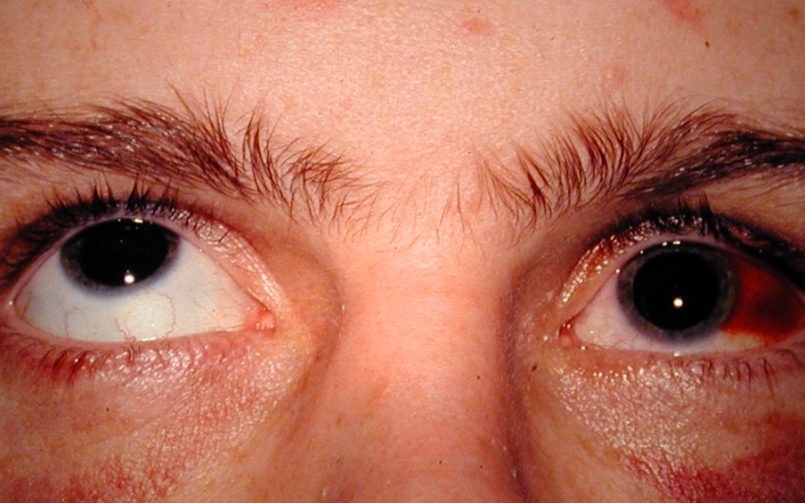
What can you do for an Orbital Blowout Fracture
Case Study:
Dr Charles Su
A 19 year old man sees you 2 days after an alleged assault with a punch injury to the L eye region. He has noticed double vision since the eyelid swelling came down sufficiently to allow binocular vision. You suspect that he has a blowout fracture of the orbit. It hurts him to look up, and the L eye does not move up as much as the right one when he attempts to do so.
Do you first perform a basic eye exam and try to determine if there is any globe injury, such as a corneal abrasion ?
a) Definitely. It is important to record the state of the eye and vision, as much as can be done safely.
b) No, because the mechanism of causation of a blowout fracture is a force on the orbital rim, and hence, any injury to the globe would be exceedingly rare.
c) Only if he complains of pain in the eye
Click for Answer
An evaluation of the vision and the globe is always important to do. The one exception is any evaluation which requires pressing on the globe where one suspects a globe rupture. Even then, one needs to do what one can without contact, such as an attempt at vision testing, even if it is confirmation of the perception of light through closed lids. There is no kind of injury which can be confidently assumed to spare the globe. The mechanism of these fractures is actually thought to be a sudden rise and fall in intra-orbital pressure, not a mechanical transmission of force from the rim.
How would one image the orbit to look for a fracture?
a) MRI of the orbits with fine cuts
b) Plain films including a Waters view, and a CT only if the “teardrop sign” is present.
c) CT scan of the orbits with fine cuts
Click for Answer
Facial plain X Rays of whatever kind are insufficient to diagnose an orbital fracture, and cannot characterise its extent or collateral damage. The “teardrop sign” was used in the past as evidence of prolapse of orbital soft tissue into the maxillary antrum, but is far less sensitive than a CT scan. CT provides the best assessment of orbital bony anatomy, and is superior to MRI in this situation.
If there is a fracture suspected, how quickly does he need to be assessed for a possible repair ?
a) In the next 1-2 days, because there are some circumstances in which urgent repair is needed.
b) In 10-14 days, as it is impossible to repair it until the swelling settles down more anyway.
c) Any time before 6 weeks, at which time irreversible fibrosis of any deformity occurs.
Click for Answer
There are some types of blowout fractures, particularly in children and teenagers, where a small, tight fracture pinches on herniated orbital tissues relatively strongly and can lead to ischaemic fibrosis. Irreversible damage can occur in the first 2-4 days, hence it is important to refer suspected orbital fractures for assessment as soon as possible, even though many fractures are more open and can be observed over 7-10 days while oedema settles, to see if dysfunction persists and forms an indication for surgical exploration and repair. Pain on eye movement, as in this case, is a pointer to the presence of tight pinching of orbital tissues.